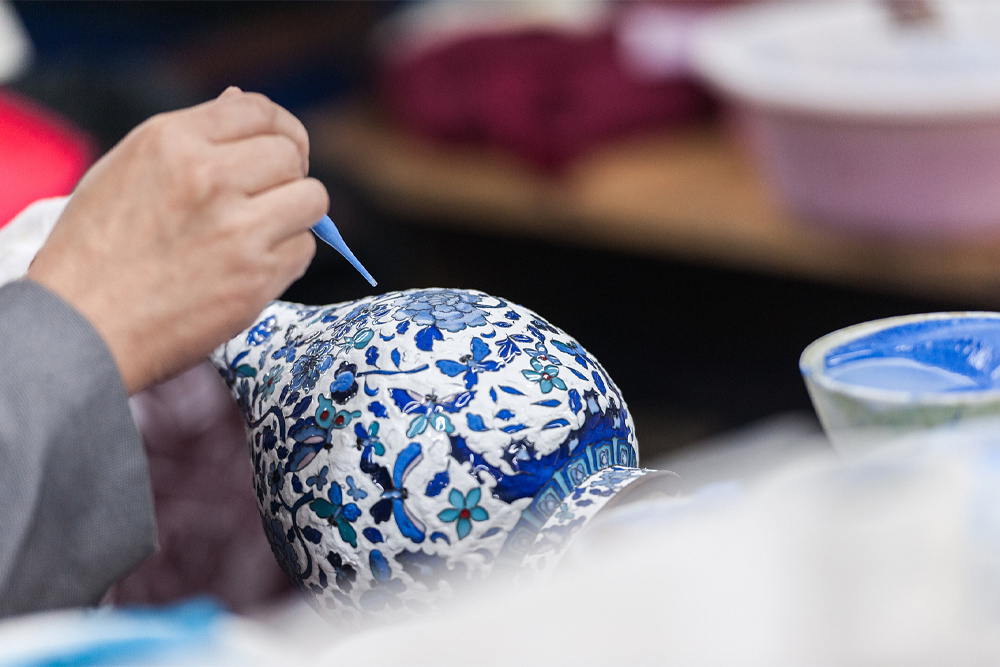Address: Industrial Zone, Ruyang County, Luoyang City, Henan Province
Ceramics & Glass
Mar 14,2025

Ⅰ、Key applications of indium oxide (In₂O₃)
1、Ceramic field
● Transparent and high-temperature ceramic manufacturing
As the main component material, Indium oxide is used to prepare transparent ceramics (such as optical windows) and high-temperature ceramics (such as the lining of corrosion-resistant reactors). Its wide bandgap property (3.6-4.0 eV) ensures high-temperature stability and optical performance.
● Electronic ceramic substrate
In piezoelectric ceramics and dielectric materials, indium oxide optimizes the electrical properties by regulating the lattice structure, and it is suitable for the substrates of high-frequency electronic devices.
2、Glass industry
● Special optical glass
Indium oxide is used in the manufacture of optical components such as prisms and lenses. It can improve the performance of the optical system because of Its high light transmittance (more than 80% in the visible light band) and low dispersion characteristics.
● Tinted glass stains
By ion doping of indium oxide (such as doping with transition metals), stable glass products with reddish-brown or yellow hues can be achieved, which are applied to decorative and functional glass.
Ⅱ、Key applications of tin oxide (SnO₂)
1、Ceramic field
● High-performance structural ceramics
Tin oxide ceramics (with a SnO₂ content of 96%-98%) are widely used in high-temperature equipment components such as crucibles and high-temperature electrodes due to their high thermal conductivity, low coefficient of thermal expansion, and high temperature resistance (<1500°C).
● Corrosion-resistant ceramic coating
The tin oxide coating has a strong resistance to the erosion of molten glass. It is used as the lining of glass furnaces and the protective layer of chemical equipment, and its lifetime is 1 to 2 times longer than that traditional materials.
2、Glass industry
● High-temperature equipment components
Tin oxide ceramics are made into components such as thermocouple protective sleeves and molten glass conveying pipelines, and they can maintain structural stability in a high-temperature oxygen atmosphere.
Previous:
Next:
COOKIES
Our website uses cookies and similar technologies to personalize the advertising shown to you and to help you get the best experience on our website. For more information, see our Privacy & Cookie Policy
COOKIES
Our website uses cookies and similar technologies to personalize the advertising shown to you and to help you get the best experience on our website. For more information, see our Privacy & Cookie Policy
These cookies are necessary for basic functions such as payment. Standard cookies cannot be turned off and do not store any of your information.
These cookies collect information, such as how many people are using our site or which pages are popular, to help us improve the customer experience. Turning these cookies off will mean we can't collect information to improve your experience.
These cookies enable the website to provide enhanced functionality and personalization. They may be set by us or by third-party providers whose services we have added to our pages. If you do not allow these cookies, some or all of these services may not function properly.
These cookies help us understand what you are interested in so that we can show you relevant advertising on other websites. Turning these cookies off will mean we are unable to show you any personalized advertising.
Manufacture of high-purity nano powder
Address: Industrial Zone, Ruyang County, Luoyang City, Henan Province

WeChat Sweep
Copyright©2025 Ruyang Ruijin Electronic Technology Co., Ltd.
SAF Coolest v1.3.1.2 设置面板 GAGSE-ZGYF-JSSZE-ZDZ
无数据提示
Sorry, the current column is being updated, please look forward to it!
You can view other columns or returnHome Page

